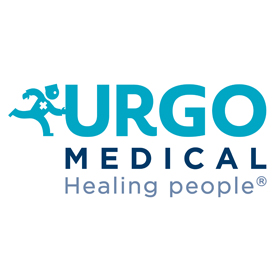Experience of the vulnology team during COVID-19 period

Submitted: June 2, 2023
Accepted: July 25, 2023
Published: December 14, 2023
Accepted: July 25, 2023
Abstract Views: 176
PDF (Italiano): 56
PDF: 23
PDF: 23
Publisher's note
All claims expressed in this article are solely those of the authors and do not necessarily represent those of their affiliated organizations, or those of the publisher, the editors and the reviewers. Any product that may be evaluated in this article or claim that may be made by its manufacturer is not guaranteed or endorsed by the publisher.
All claims expressed in this article are solely those of the authors and do not necessarily represent those of their affiliated organizations, or those of the publisher, the editors and the reviewers. Any product that may be evaluated in this article or claim that may be made by its manufacturer is not guaranteed or endorsed by the publisher.
Similar Articles
- Viviana Nebbioso, Giuseppe Nebbioso, Francesco Petrella, Daniele Naviglio, Use of biological products in the healing process of skin lesions , Italian Journal of Wound Care: Vol. 7 No. 1 (2023)
- Matteo Bucalossi, Fabrizio Mariani, Autologous peripheral blood mononuclear cells from selective filtration for treatment of chronic lower limb lesions: Results at 4 years , Italian Journal of Wound Care: Vol. 5 No. 2 (2021)
- Paola Pini, Skin ulcers-microbiota-infected ulcers , Italian Journal of Wound Care: Vol. 7 No. 3 (2023)
- Riccardo Garcea, Paolo Savelli, Kennedy’s terminal ulcer and pressure injury: two different aspects of medical liability related to the same injury , Italian Journal of Wound Care: Vol. 7 No. 2 (2023)
- Fiorella Riservati, Negative pressure therapy: costs and benefits , Italian Journal of Wound Care: Vol. 2 No. 3 (2018)
- Giulia Casadei, Costanza Santini, Giovanni Calbucci, Insertion of the podiatrist and implementation of the diagnostic and therapeutic care path for the diabetic foot in the area of Cesena , Italian Journal of Wound Care: Vol. 2 No. 3 (2018)
- Rolando Tasinato, Paolo Zangrande, Topical treatment with a matrix containing mesoglycan in association with hyaluronic acid in the management of chronic skin ulcers of the lower limbs , Italian Journal of Wound Care: Vol. 3 No. 2 (2019)
- Alberto Garavello, Margherita Lo Ponte, Stefania Gilardi, Paola Fiamma, Massimo Tozzi, Recurrent venous leg ulcers: clinical analysis of an experience , Italian Journal of Wound Care: Vol. 3 No. 2 (2019)
- Giuseppe Nebbioso, Viviana Nebbioso, Carmela Orefice, Francesco Petrella, Ciro Falasconi, Health literacy, empowerment and communication in wound care management , Italian Journal of Wound Care: Vol. 2 No. 2 (2018)
- Carla Pezzuto, Nadia Felisi, Nadia Crispini, Ilaria Rosso, Use of photobiomodulation with blue light in the treatment of ulcers of various etiology in spinal cord injured patients: a case series , Italian Journal of Wound Care: Vol. 7 No. 2 (2023)
You may also start an advanced similarity search for this article.



 https://doi.org/10.4081/ijwc.2023.102
https://doi.org/10.4081/ijwc.2023.102






